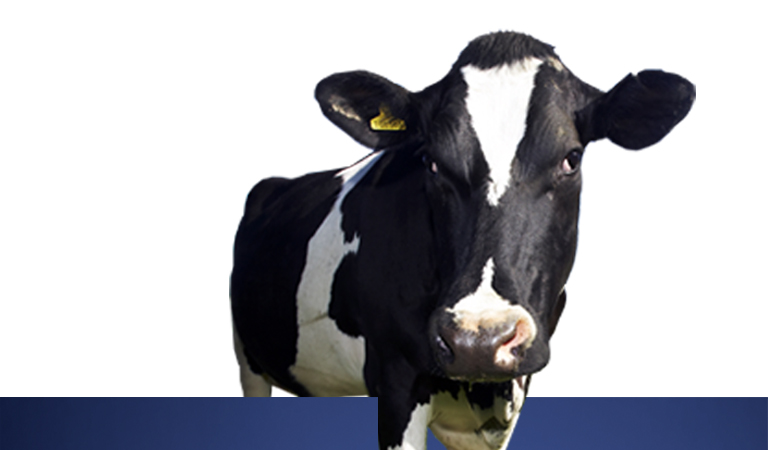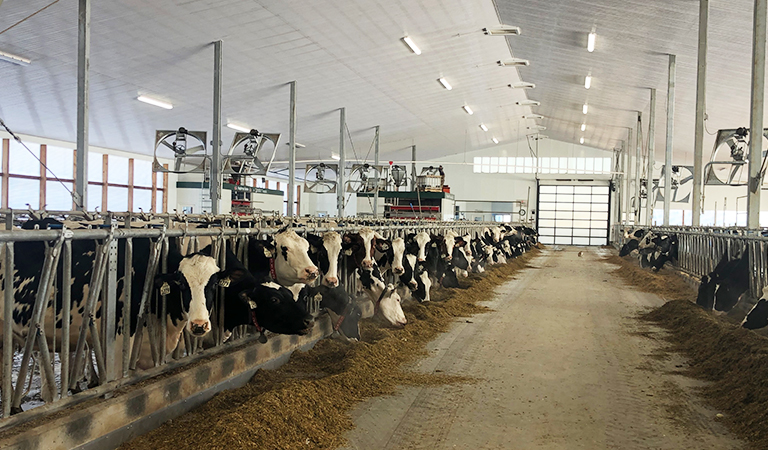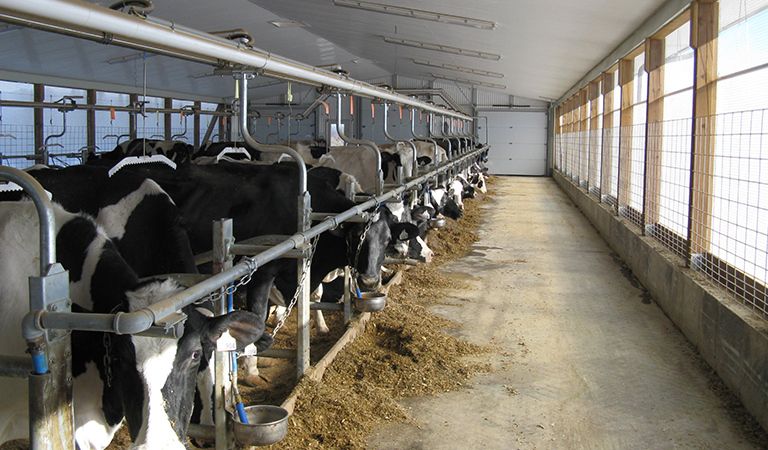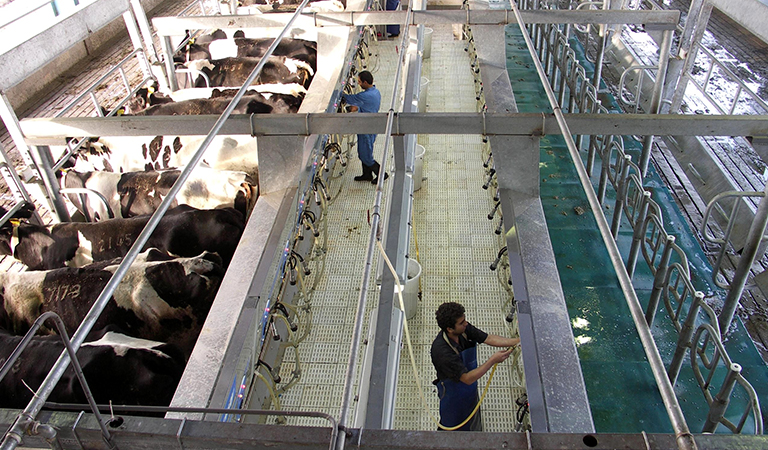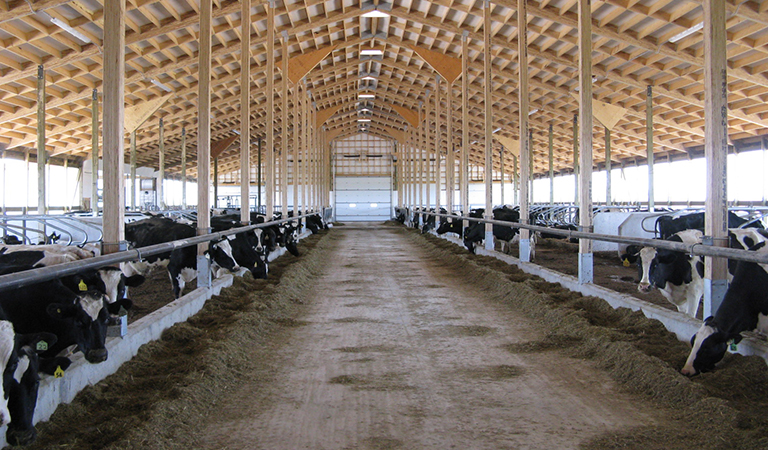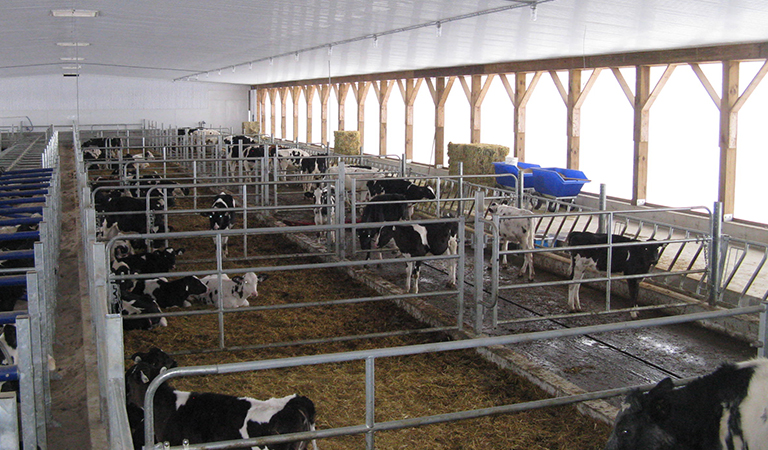Dairy Housing
Cow comfort (milk production) is not what a human perceives as comfortable. Building design does not have to be expensive. Moderating temperature swings and keeping humidity levels under control is key.
Free Stall
Free stall barns are typically split into a separate dry cow barn and the main barn containing the milking herd. The milking herd moves freely from their resting pak along concrete alleys that are scraped or flushed (to remove manure) to the feed bunks. The milking cow is usually tagged to automatically identify her for feed rations and milk productivity. Cows eat freely from the feed bunks which contains a total mix ration (TMR). The herd will be scheduled to be milked 2 to 4 times daily in the milking parlour which will be accomplished manually with semi-automatic milking equipment or with robotic milkers.
Sun-North would install a variety of sidewall curtains and panels that open and close the sidewalls of the freestall barn allowing the fresh outside air to move across the barn and exit through the ridge of the building. Large Altra-Air ceiling fans can be added to assist air movement and help keep alleys and the resting pak dry. Evaporative cooling can be added in extreme heat situations.
Tie Stall
Tie Stall barns are still preferred in many areas since it lends itself to more direct contact with each animal, better health care and less aggression between animals. Modern automation with pipeline milking, automatic takeoffs, scrapers and stable cleaners and automatic ration distribution mean labour can be reduced.
When selective breeding stock and promotion is part of the program then the Tie Stall barn is ideal. Natural light and ventilation becomes very important to keep animals healthy and to show them under the best conditions.
Sun-North manufactures sliding glass sidewall panels that can be operated manually or automatically which allows fresh air in across the barn and then out through a glass operating ridge or chimney system. In extreme heat conditions circulation fans or tunnel ventilation can be employed.
Milking Parlour
With modern milking herds, cows are milked 2 to 4 times per day. The milking herd is moved into the holding area then into the milking parlour. These parlours are highly automated and able to milk 20 to 100 cows at one time. This is done with manpower and semi-automatic equipment or with robotic assist. Since the density of animals in both the holding area and then the parlour is so high it becomes paramount to have excellent ventilation.
Sun-North has developed many different combinations of ventilation to maximize the comfort and profitability of both the holding area and the milking station..
Heifer Dry Cow Barn
Dry cows (non milking cows) and heifers that don’t need the same feed rations and attention are normally housed in a separate building. Ventilation requirements are similar to the main dairy barn. A bedding pak without free stalls is an option. Lots of natural light, low humidity and abundant fresh air is a must for maintaining good health.
**Consideration needs to be given to maternity pens and sick/treatment pens for the herds overall wellbeing. This area is usually kept at one end of the main free stall barn closest to human traffic so that they will be attended to. The area needs to have good natural light and fresh air.
Calf Housing Barn
Calf care is vital to long term herd improvement. To prevent scours and respiratory problems, many dairymen separate the calves one to three days after birth and place them outside in individual calf hutches. Calf hutches can be labour intensive and uncomfortable due to weather.
Sun-North has designed many different types of warm and cold calf facilities that address the issue of respiratory problems and has become a solution to group housing.
